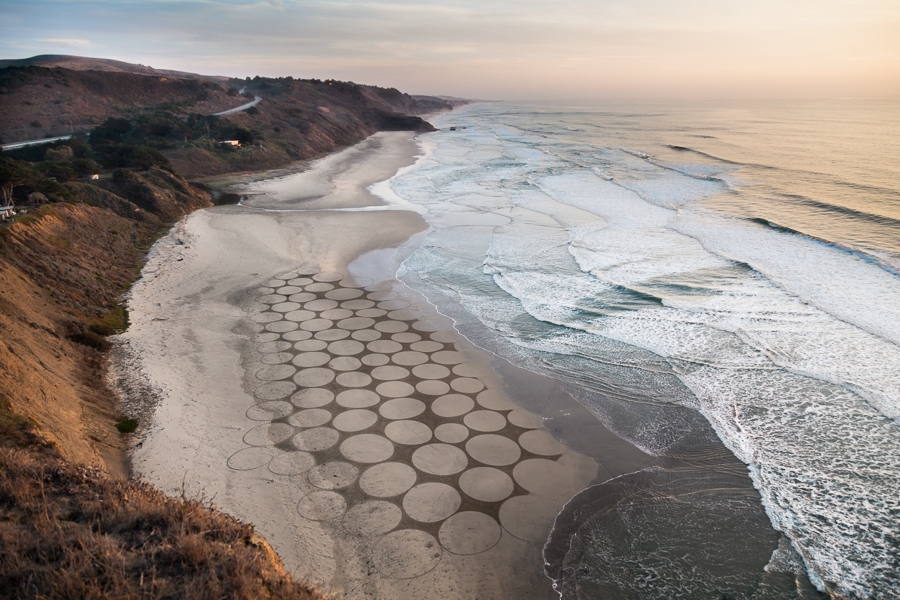
I once had a colleague confess to me the reason he became an architect was to achieve immortality. He believed he could accomplish this by building structures that endured well after his time on this earth came to an end. This idea is not new and has a rich historical precedent. The Egyptian pyramids, for example, are a powerful testimony to this way of thinking and our fascination with those powerful enough to make such a lasting mark on our planet.
Although I admired my colleague’s understanding of history, self-awareness and honesty, I found his confession filled with self-focus and hubris.
Whenever someone becomes obsessed with making something permanent or long lasting it is fair to ask the question: Why? What motivates us to make things that resist time and the relentless natural processes that eventually erase our marks on the earth? This is the reason I find the work of artist Jim Denevan so fascinating and compelling. Denevan has spent the last 20 years drawing in the sand. He begins his work as tide waters recede and, finding a stick on the beach, will start etching his art in the sand. He completes his work just before the tide turns and the waves start creeping back up the shore.
Like a good Boy Scout, after he completes the drawing he returns the stick to the place where he found it, and within a few hours his work completely disappears. His drawings are a part of the natural cycle and through this profound act of humility we are reminded that it may be OK if our names are not carved into a stone obelisk or that our contributions are overlooked in the historical record. His work reminds us to enjoy the present and see the beautiful side of our mortality. At the end of our term it may be stronger, more responsible and profound to “leave no trace.”

This piece reminds of this poem:
http://zenpencils.com/comic/ozymandias/